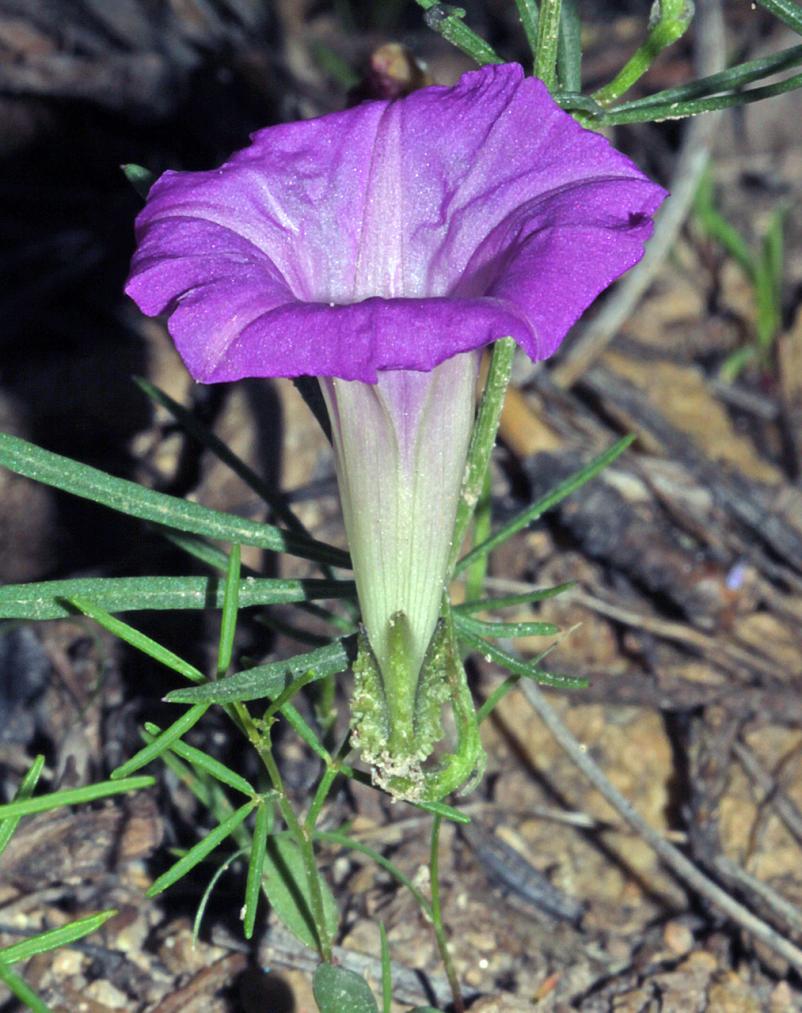|
Family: Convolvulaceae |
PLANTS: Annual or perennial vines, shrubs or trees. STEMS: usually twining, sometimes prostrate or floating, glabrous or pubescent. LEAVES: simple, lobed, divided or less often compound. INFLORESCENCE: mostly axillary, l-many-flowered cymes, rarely paniculate. FLOWERS: on long or short pedicels, the bracts scale-like to foliaceous; sepals herbaceous to coriaceous, ovate to oblong or lanceolate, glabrous to pubes- cent, often somewhat enlarged in fruit; corollas purple, red, pink, white, or less often yellow, actinomorphic or rarely slightly zygomorphic, funnelform, campanulate, tubular or salverform, the limb shallowly or rarely deeply lobed, the mid-petaline bands well defmed by 2 distinct nerves; stamens usually included, the filaments filiform, often triangular-dilated at the base, mostly unequal in length; ovary usually 2-4-locular, 4(-6) ovulate; style simple, filiform, usually included; stigmas capitate, entire or 2-3-lobed, globose. FRUITS: globose to ovoid capsules, mostly 4-6-valved or splitting irregularly. SEEDS: 1-4(-6). NOTES: Ca. 500 spp. through the tropics and subtropics. (Greek: ipos = worm + homoios = like, referring to its twining habit). Q'Donell, C. A. 1959. Lilloa 29:19-86; Matuda, E. 1963. An. Inst. BioI. Mex. 34:85-145; McDonald, J. A. 1995. Harvard Papers in Botany 6:97-122. REFERENCES: Austin, Daniel F. 1998. J. Ariz. - Nev. Acad. Sci. Convolvulaceae 30(2): 61. Sep 5, imbricate, often unequal; cor funnelform to campanulate or salverform, the margin entire, angled, or shallowly lobed; ovary 1-3-locular, with 2 ovules per locule, or sometimes 4-locellar by the development of partitions between the ovules; style 1, elongate; stigma entire or 2-3-lobed; capsule 2-4-valved; ours twining herbs with broad, cordate or lobed lvs and handsome fls produced singly or few together at the summit of axillary peduncles. 600+, cosmop. (Pharbitis, Quamoclit) Gleason, Henry A. & Cronquist, Arthur J. 1991. Manual of vascular plants of northeastern United States and adjacent Canada. lxxv + 910 pp. ©The New York Botanical Garden. All rights reserved. Used by permission. |


